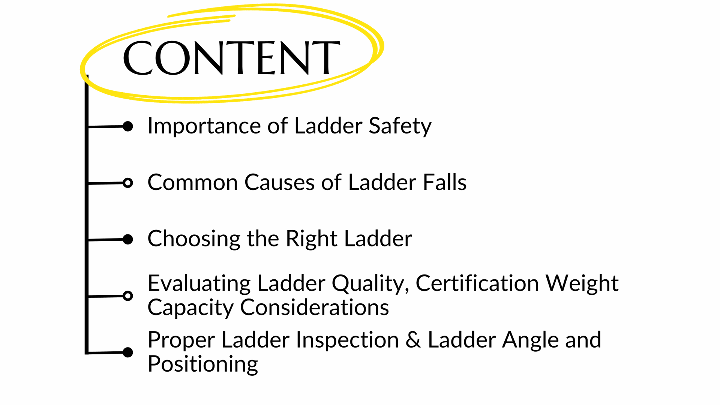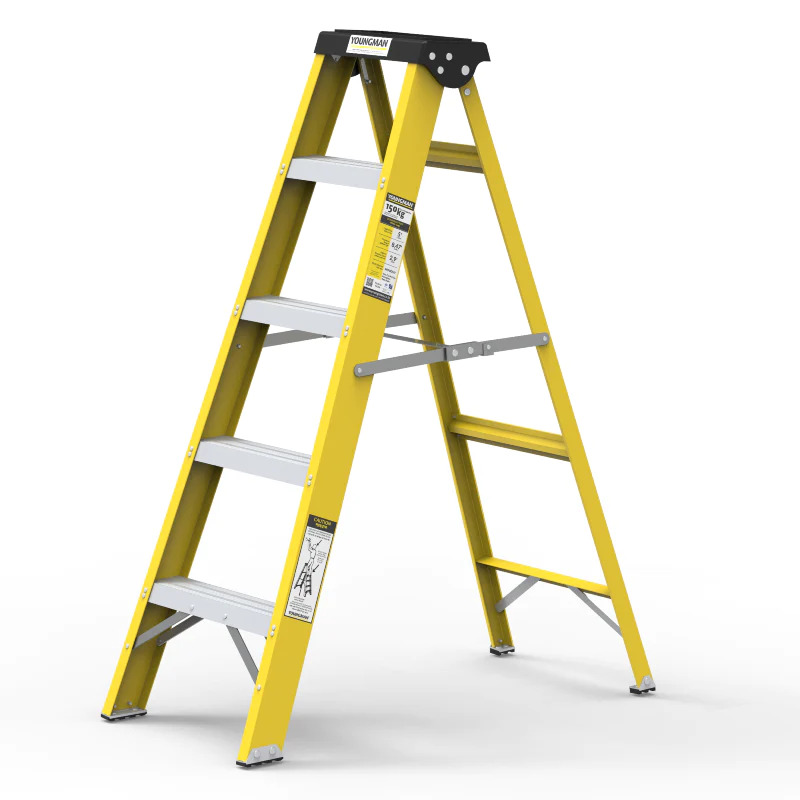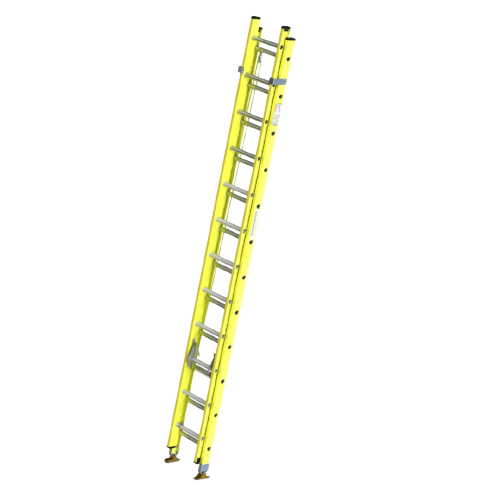In this article, we'll explore practical tips and guidelines for avoiding falls from ladders. Individuals in industrial settings, where ladder use is a common part of their daily work. We'll break down the key aspects of ladder safety, focusing on clear and straightforward advice to help you stay safe and secure while working at heights.

Importance of Ladder Safety
Ladders are essential tools in various industries, facilitating access to elevated workspaces. While they serve this purpose efficiently, ladder-related accidents continue to be a concern. Maintaining ladder safety is crucial for preventing falls, injuries, and even fatalities. In this article, we'll delve into the significance of ladder safety, the risks associated with ladder use, and the measures to ensure a secure climb.
Article: FRP Ladder and Its Top 5 Work at Height Safety Benefits
Common Causes of Ladder Falls
The most common causes of ladder accidents often boil down to human error and oversight. These are some of the primary contributors:
1. Overreaching while using the ladder: Stretching too far from the ladder's center of support can lead to a loss of balance and a dangerous fall.
2. Not having three points of contact when climbing up and down the ladder: Maintaining at least three points of contact (usually two hands and one foot or two feet and one hand) with the ladder is essential to ensure stability.
3. Missing a step while climbing up or down the ladder: Neglecting a step or failing to secure a proper foothold during ascent or descent poses a significant risk.
4. Using a ladder that does not meet the project requirements: Selecting the wrong ladder for a specific task, such as choosing a short ladder for a high job, can lead to precarious situations.
5. Placing the ladder on uneven ground: Uneven surfaces can cause ladders to wobble or tilt, increasing the likelihood of accidents.
Choosing the Right Ladder
Selecting the appropriate ladder is the first step toward ensuring safety during any task involving elevation. Different types of ladders are designed for specific uses, and understanding their characteristics is vital.
- Step Ladder: Step ladders are freestanding, self-supporting, and designed with an A-type shape. They are ideal for tasks that don't require additional support.

- Straight Ladder: The straight ladder is the simplest and most commonly used type. It consists of one long, straight section and is leaned against a surface for support.

- Extension Ladder: Extension ladders consist of two or more sections that can be extended to reach greater heights. They are commonly used for tasks like painting or accessing roofs.

- Platform Ladder: Platform ladders provide a stable and secure platform for working at elevated heights, offering superior safety and convenience compared to traditional ladders.

Evaluating Ladder Quality and Certification
Ensuring the quality and safety of a ladder is paramount. The following certifications guarantee that ladders meet rigorous standards:
- EN131 Certification: This certification ensures that ladders meet the requirements for strength, stability, and performance.
- ERDA Certified: Ladders certified by the Electrical Research and Development Association (ERDA) are safe for use in electrical environments.
Article: Which Standard to be Followed for Ladder Safety
Weight Capacity Considerations
Always check the ladder's weight capacity and never exceed it. The latest EN standard stipulates a minimum platform load capacity of 150 kg. Take into account the weight of your tools and equipment when selecting a ladder.
Proper Ladder Inspection
Pre-Use Inspection Checklist: Before each use, perform a thorough inspection using the manufacturer's checklist to ensure that the ladder is in optimal condition.
Regular Maintenance: Regular maintenance is crucial to extending the lifespan of your ladder. Ensure that it remains in good working order through periodic checks and servicing.
Source: Download FREE Ladder Inspection Guide
Setting Up Your Ladder
To ensure your safety during ladder use, consider the following:
Proper Placement on Different Surfaces: The surface on which you place the ladder must be stable and level. When working on uneven terrain, use ladder levelers to ensure stability.
The Correct Way to Climb: 3-Point Contact Rule: Always maintain at least three points of contact with the ladder while ascending or descending. This typically involves having two feet and one hand or two hands and one foot on the ladder at all times.
Avoiding Overreaching: Never lean too far to either side, overreach, or stretch excessively while on the ladder. Such actions can compromise your balance and stability.
Ladder Angle and Positioning
For extension/straight ladders, achieving the correct angle is critical. Aim for a 75-degree angle to ensure stability. When using step ladders, follow the manufacturer's guidelines for safe positioning. Additionally, take into account environmental factors; for non-conductive purposes, aluminum ladders are suitable, but when working in electrical environments, opt for a fiberglass-reinforced plastic (FRP) ladder.
Tips for Safe Workplace Ladder Use
Always inspect your ladder before use, following the inspection guide provided by the manufacturer. It's a crucial step in identifying any potential issues and ensuring that the ladder is in safe working condition.
Conclusion
The commitment to ladder safety and the proper selection and use of ladders for specific settings are fundamental to preventing falls and accidents. By following safety guidelines and raising awareness of ladder safety in the workplace, we can foster a culture of accident prevention and ensure a secure environment for all ladder users. Encouraging others to prioritize ladder safety is a collective responsibility that can save lives and reduce workplace injuries
Why Y-Access Manufacturing (Formerly Youngman) ?
Looking for a ladder to prioritize safety? Then check Y-Access Manufacturing (Formerly Youngman) range of EN131-certified ladders. Our products are designed to provide superior protection while ensuring maximum productivity. Trusted by over 10,000 industries. So, do not compromise on safety, choose Y-Access Manufacturing (Formerly Youngman) for all your scaffold needs. Reach out to us at: sales@ymfg.co.in or call: +91-9015964626